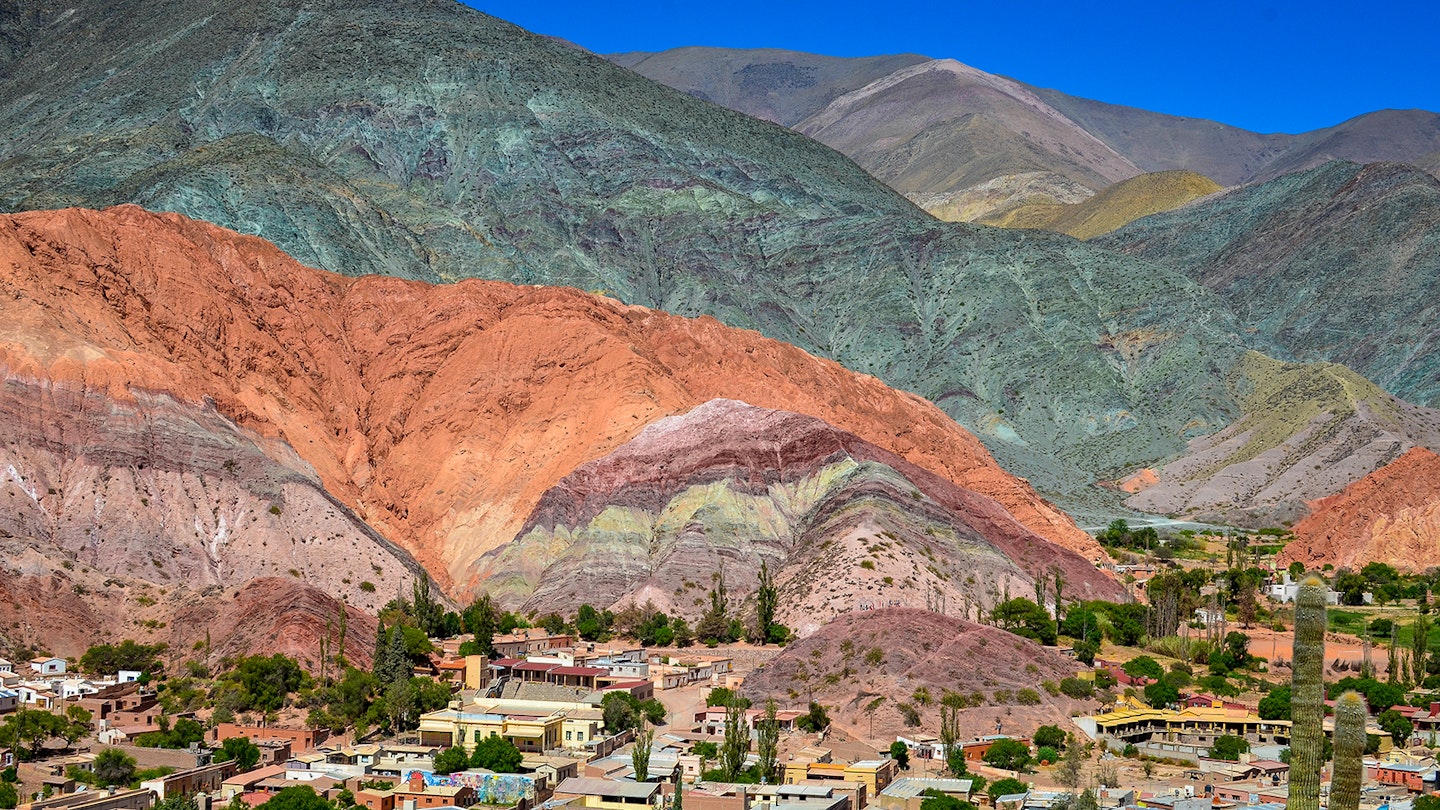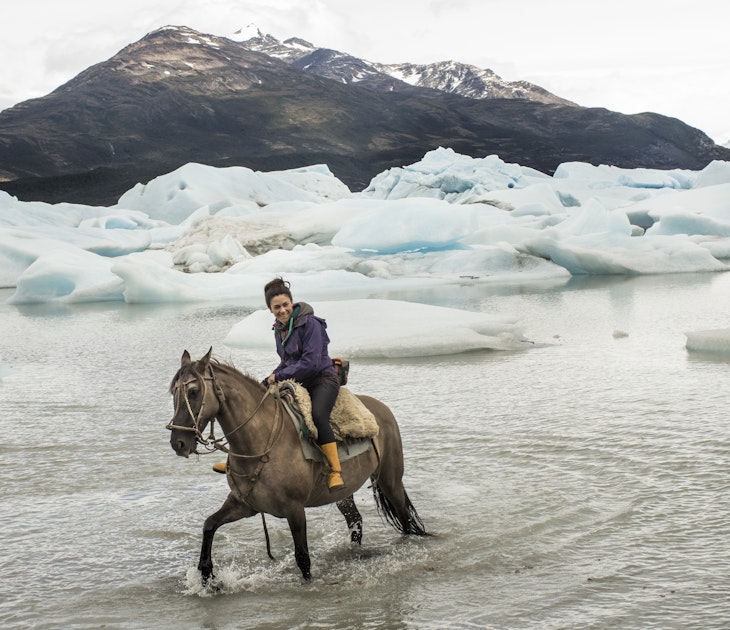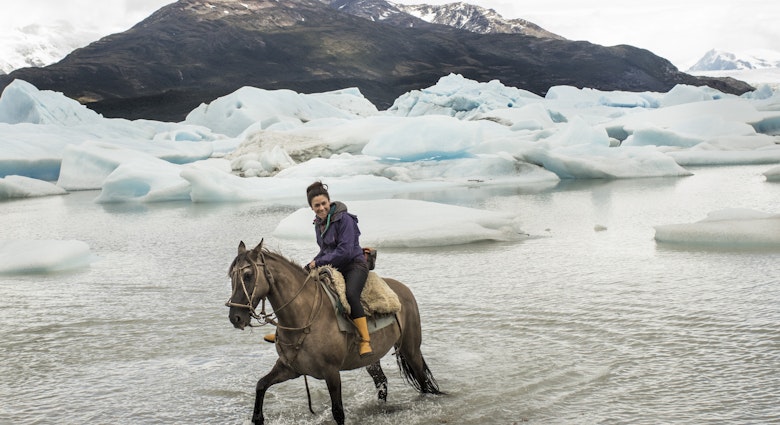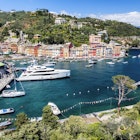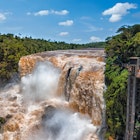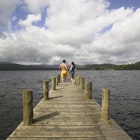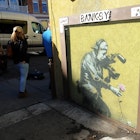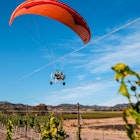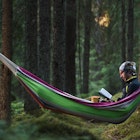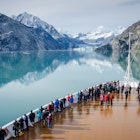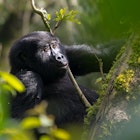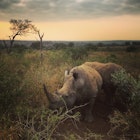Francis Ford Coppola found creative inspiration in the energy of Buenos Aires. Antoine de Saint-Exupéry appreciated Argentina’s mountains from an aerial perspective. From the snow-capped Andes and the far-flung reaches of Tierra del Fuego to the rushing waterfalls of Iguazu, Argentina’s landscapes have provided inspiration for generations of artists, writers, musicians and filmmakers.

Antoine de Saint-Exupéry – Patagonia
Antoine de Saint-Exupéry saw Argentina’s landscapes from a privileged vantage point: the cockpit. In 1929, after years of flying airmail routes in Europe and Africa, the French aviator and writer was transferred to South America. In his role as director of the Aeroposta Argentina, he inaugurated new routes from Buenos Aires to a pair of coastal cities in Patagonia, Comodoro Rivadavia and Rio Gallegos.
Saint-Exupéry’s experiences of flying over the country inspired his second novel, Night Flight, set in Argentina and published in 1931. And it’s believed that a specific hat-shaped mountain that he flew over – located near Peninsula Valdés, now a popular whale-watching destination – inspired his famous illustration of “a boa constrictor digesting an elephant” in The Little Prince.

But Patagonia wasn’t the only region of Argentina that influenced Saint-Exupéry’s masterpiece. In 1929, he experienced mechanical difficulties while flying north from Buenos Aires and was forced to make an emergency landing in a field in the northeast province of Entre Ríos. Two girls on horseback approached him, offering assistance; they understood when he spoke to them in French. Saint-Exupéry ended up spending that night – the first of many – with the French-speaking Fuchs family. They were temporarily living in Castillo San Carlos, a crumbling castle near the banks of the Río Uruguay, and it’s widely thought that the author’s time with them shaped certain details of his greatest work.
Today, travelers can retrace his steps by visiting the old mansion, located in a public park outside the city of Concordia.
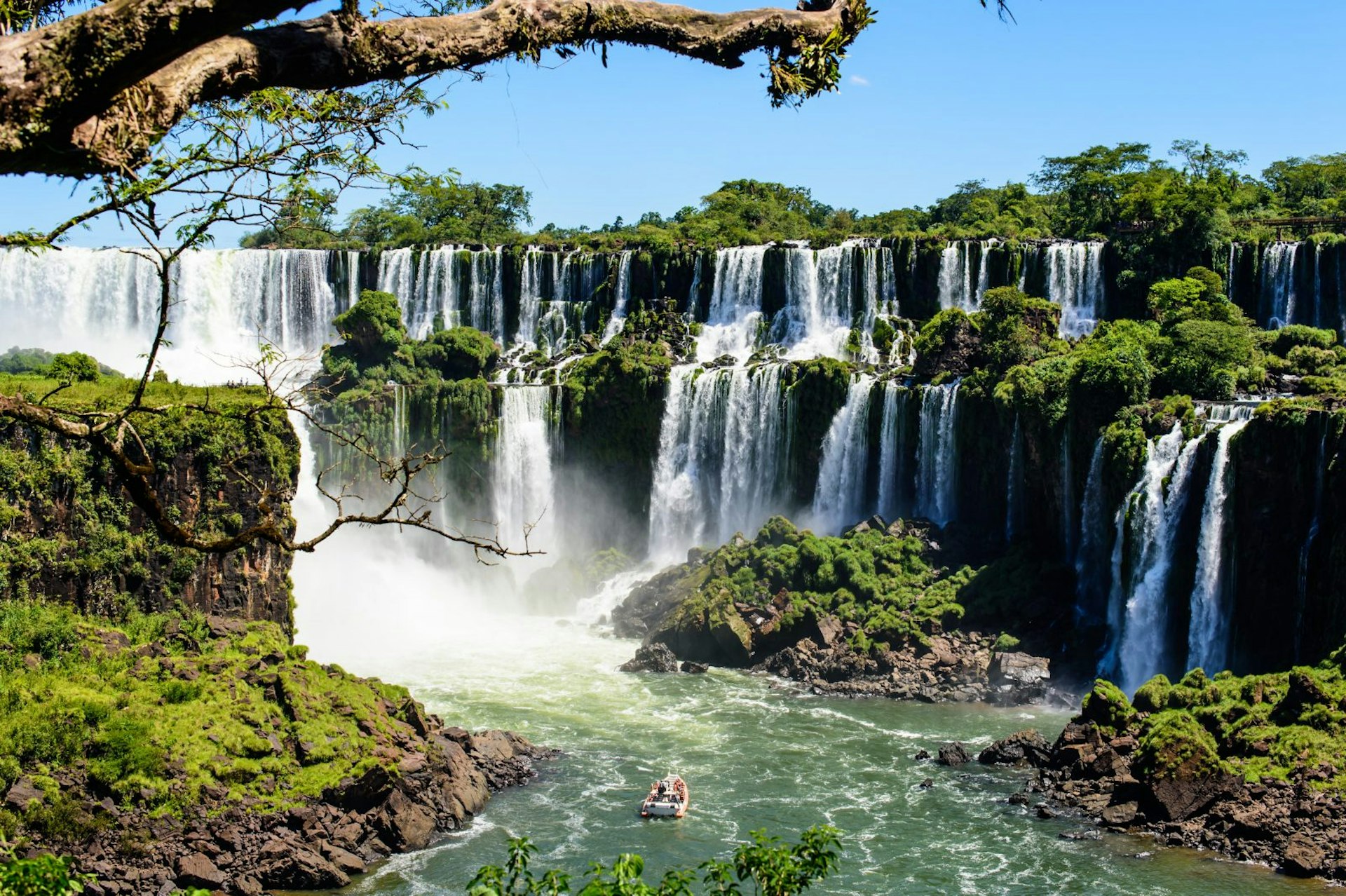
Gustavo Santaolalla – Iguazu Falls & Ruta Nacional 40
Academy Award-winning composer and musician Gustavo Santaolalla has been living in Los Angeles for decades. But he frequently looks back to his native Argentina for artistic inspiration. One of his most famous pieces, “Iguazu,” is named after Iguazú Falls, the largest waterfall system in the world, located on the border of Argentina and Brazil. Prominently featured in Alejandro González Iñárritu’s 2006 film Babel, the piece is a haunting solo arrangement for the charango – an Andean stringed lute – that evokes the feeling of rushing water.
References to Argentina’s landscapes appear throughout Santaolalla’s music. His 1998 recording “De Ushuaia a La Quiaca” was used to powerful effect at the end of Walter Salles’ 2004 film The Motorcycle Diaries. Santaolalla’s title refers to Argentina’s southernmost and northernmost cities – Ushuaia and La Quiaca, respectively – and the long journey between them along the famed Ruta Nacional 40 highway. It was a fitting choice for the soundtrack to a film about a young Che Guevara traveling through South America on a motorcycle. Not long after the film’s release, Santaolalla won back-to-back Oscars for Best Original Score for Brokeback Mountain (2005) and Babel (2006).
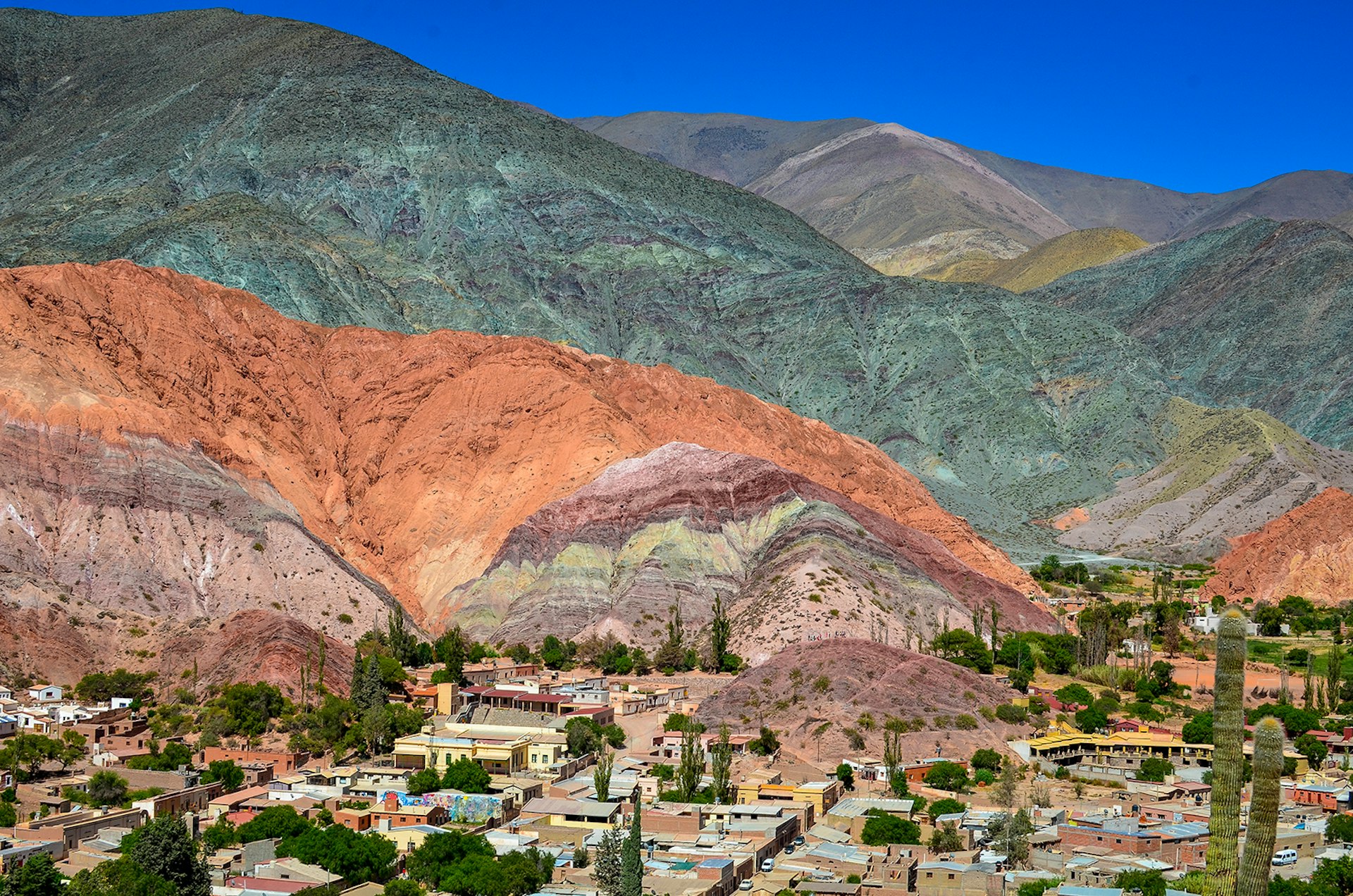
Maria Elena Walsh – Jujuy and the Northwest
The great Argentine poet, musician, playwright and composer Maria Elena Walsh (1930-2011) is best remembered for her songs for children. But her deeply layered work is intended for audiences of all ages. Some of her poetry and music celebrates Argentina’s landscapes and people, particularly those of the northwest: her early collaborations with folklore musician Leda Valladares included songs like “Viva Jujuy” and “Chacarera del Tafí” (in reference to Argentina’s indigenous capital of Jujuy and to Tafí del Valle, a beautiful mountain town outside the city of Tucumán).
Her later work carried political and social messages: an outspoken feminist and liberal, Walsh was a fierce critic of Argentina’s military dictatorship (1976-93). Her 1967 recording “El País del Nomeacuerdo" ("The Country of I Don't Remember") was the theme of the The Official Story – a film about a family living under the military regime – which won the Academy Award for Best Foreign Language Film in 1985.

Francis Ford Coppola – Buenos Aires
The celebrated film director (best known for his 1972 classic The Godfather) doesn’t downplay his affection for Argentina. He’s spoken publicly about the country’s beauty and called Argentine wines “the great secret of the world.”
Most of all, Francis Ford Coppola says he’s drawn to Argentina’s intellectual character and cultural traditions, from cinema and theater to music to literature. So it’s no surprise that he chose Buenos Aires as the set for his 2009 film Tetro. While filming for a year and a half in the neighborhood of La Boca, Coppola rented a house in Palermo Soho and spent his free time strolling around the city, having breakfast in historic cafes and leisurely dinners in traditional parrillas (steakhouses). His fondness for Buenos Aires is evident in the film – and in the rental house in Palermo Soho, which he’s since turned into a boutique hotel with his name on the front door.

Mercedes Sosa – Tucumán
Nicknamed “The Voice of America,” the legendary singer Mercedes Sosa (1935-2009) introduced Argentine folkloric music to the rest of the world. Originally from the city of Tucumán, in Argentina’s northwest, Sosa didn’t write her own music – she interpreted songs written and composed by others, including Argentine folk musician Atahualpa Yupanqui and the great Chilean singer Violeta Parra.
Sosa’s soulful interpretations of those pieces, many of which paid homage to the landscapes and culture of Argentina’s northwest (like “Luna Tucumana,” or “Moon of Tucumán”) earned her worldwide recognition. Through the 1990s, she sang to sold-out crowds at Lincoln Center and Carnegie Hall, Rome’s Colosseum, even the Sistine Chapel in Vatican City. The year of her death, Sosa released an album, Cantora, that collected her duets with a roster of Latin American music talents, from Shakira to Caetano Veloso to Calle 13.
Like Maria Elena Walsh, Sosa was also known for her political activism: through music, she celebrated the natural beauty of her country, and she challenged its leaders during the military dictatorship. That’s how Sosa got her other nickname: “The Voice of the Voiceless.”
https://shop.lonelyplanet.com/products/lonely-planets-best-in-travel-paperback-2019
